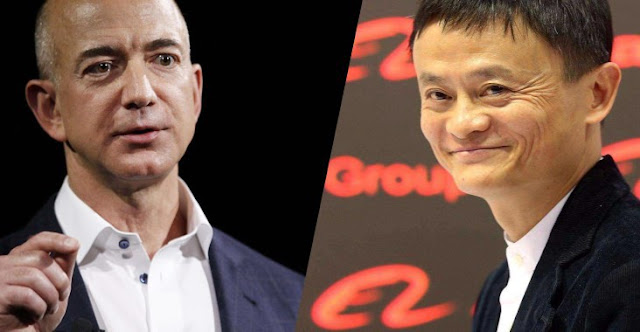Black Friday versus Singles’ Day!
Valentine’s Day,
Easter, Christmas, Halloween, these celebrations create sales peaks around the
world. Naively, we might say these peaks are simply due to the celebrations
themselves, but let’s face it; there is a well-developed marketing strategy
behind each and every one, and we are not just saying this because we are a
marketing consultancy firm.
Little known in
Europe until a few years ago, Black Friday has been huge in the United States
for decades. The famous day falls the Friday after Thanksgiving, when North Americans
are on vacation and have time to shop, and when the Christmas season officially
launches. The real motivation for Black Friday was to counter typically slow sales
at that time of year, causing business owners and companies to reduce prices to
boost sales.
With Halloween, Valentine’s Day and many others, Americans were way ahead of Europe and Asia when it came to capitalizing on these commercial booms. And by a long shot, predating the creation of Amazon or Alibaba. Now China has its own annual black Friday on 11 November: Singles’ Day. The event celebrates being single, and the date 11/11 (11 November) was chosen because it consists of four "1s," representing four singles. Last year companies made no less than USD 25.3 billion in sales on that day, with the New York Times describing it as the “frenzied annual celebration of consumption and commerce that is China’s much larger version of Black Friday.”
And the e-commerce era was born
All these
celebrations existed way before e-commerce was created, so for once it can’t be
blamed. According to The
Economist, shoppers will spend record amounts of money during the upcoming
Singles day (11 November 2018) and Black Friday (24 November 2018).
Leaders in their
fields, Amazon (part of the G.A.F.A ) and Alibaba (part of the B.A.T) will
again be the protagonists of these D-Days. All of them in their own way will be
looking to exploit these commercial opportunities with incredible promotions. It’s
a battle to see who will secure the highest sales’ numbers, no matter what. The
below graph from Forbes speaks for itself, comparing the total retail sales in
billions of dollars between Singles’ Day, created recently in 2009, and Black
Friday. They have also included Cyber Monday, another top selling booster.
Mobile on the rise
We often think that everything is driven by
mobile now, but this hasn’t always been the case, even if the evolution has
been really fast. In 2013, only 21% of Singles' Day sales came from mobile
devices. That percentage point grew to 42.6% in 2014, 68% in 2015, 82% in 2016,
and 90% in 2017, during a four-year period where total sales revenue tripled.
Even if trust to add credit cards and provide
personal information online for shopping has been increasing over the last
decade, the latest
Global Survey on
internet security and trust
reveals that 50% of people around the
world are more concerned about their privacy than a year ago.
All considerations apart, online shopping
remains a key sales driver, but brick and mortar is still in the equation. Even
though e-commerce is growing and commercial opportunities to get the best deal
are multiplying, customers still expect to be able to visit physical stores.
The era of Amazon and Alibaba is just beginning!
In a future article we will go behind the
scenes of e-commerce for luxury goods, as well as the growing presence of Artificial
Intelligence in this market.
Research:
The earliest evidence of the phrase Black
Friday applied to the day after Thanksgiving in a shopping context suggests
that the term originated in Philadelphia, where it was used to describe the
heavy and disruptive pedestrian and vehicle traffic that would occur on the day
after Thanksgiving.
Don't forget to hit the Subscribe button to be notified of our new article!


https://loveblackfridaydeals.com/ new mobile deals
ReplyDeleteExcellent and very exciting site. Love to watch. Keep Rocking.
ReplyDeleteblack friday store
Here you can get best laptop deals. https://www.spreaker.com/user/14472433
ReplyDeleteHere you can get best cameras deals. http://www.authorstream.com/BlackFridayDealzBest/
ReplyDeleteHere you can get best speakers deals. https://www.blurb.com/user/BlackFridayB?profile_preview=true
ReplyDeleteHere you can get best DVD players deals. https://www.mobypicture.com/user/BlackFridayDealzBest
ReplyDeleteHere you can get best headphones deals. https://letterboxd.com/blackfridaybest/
ReplyDelete